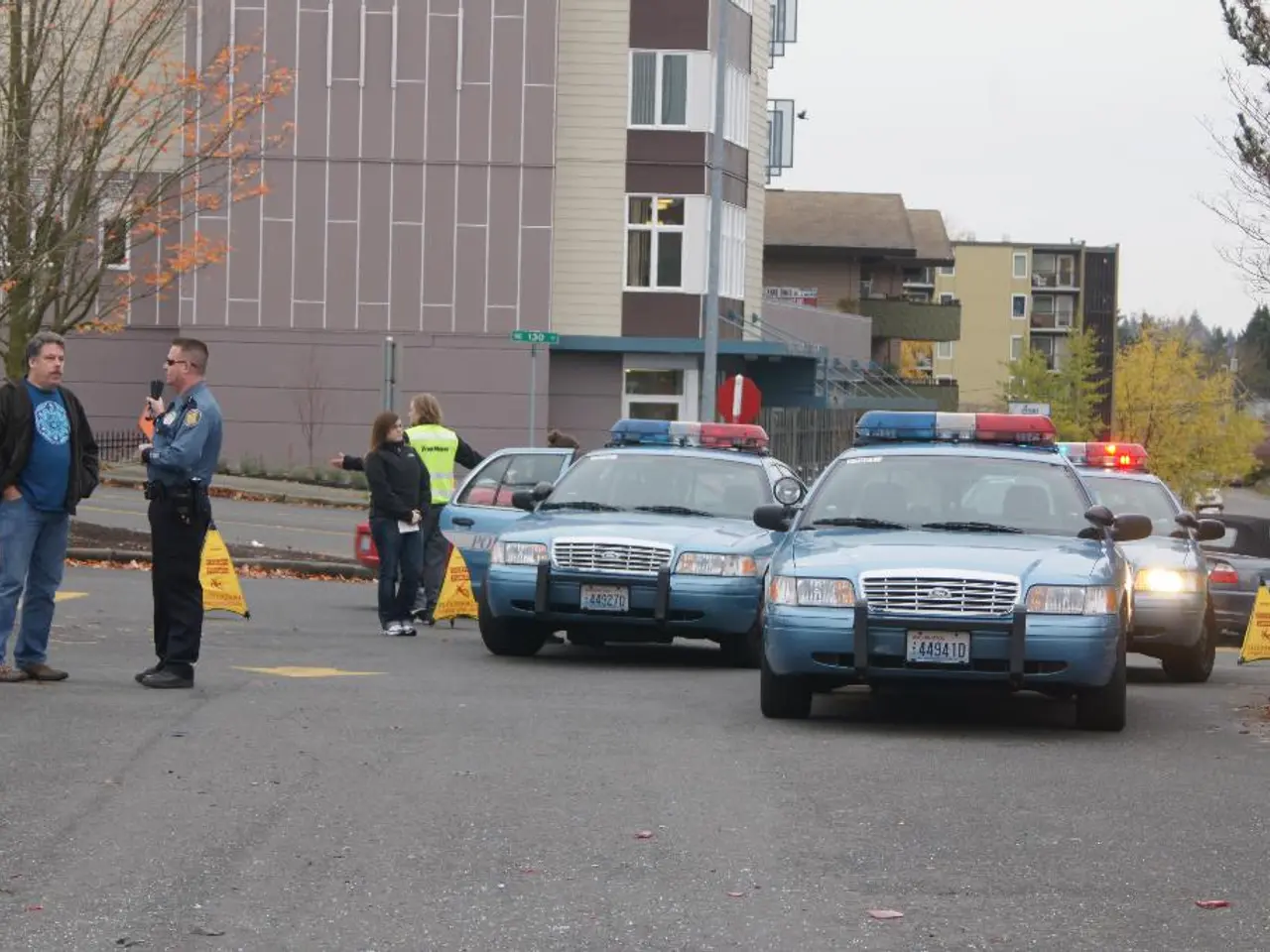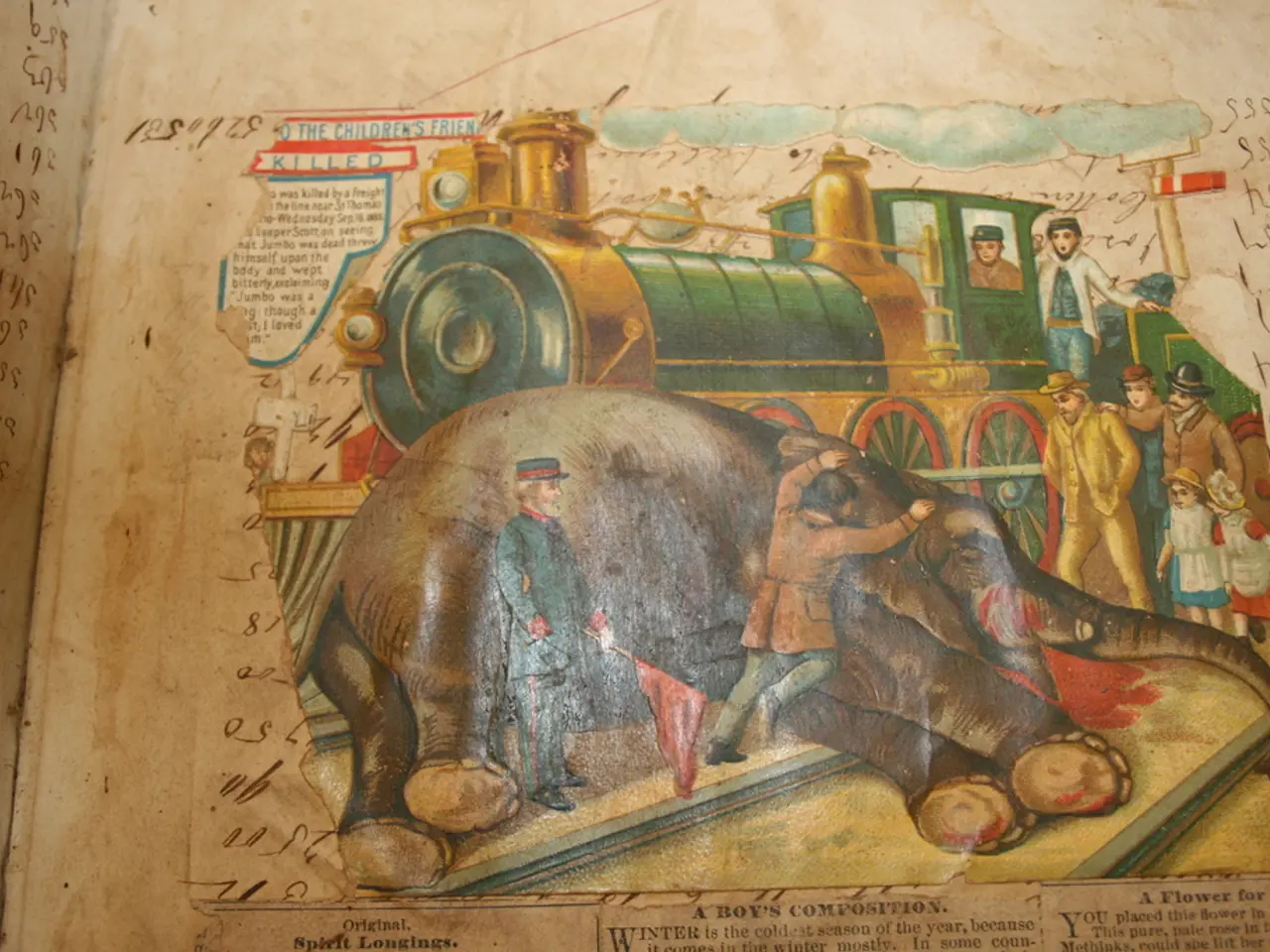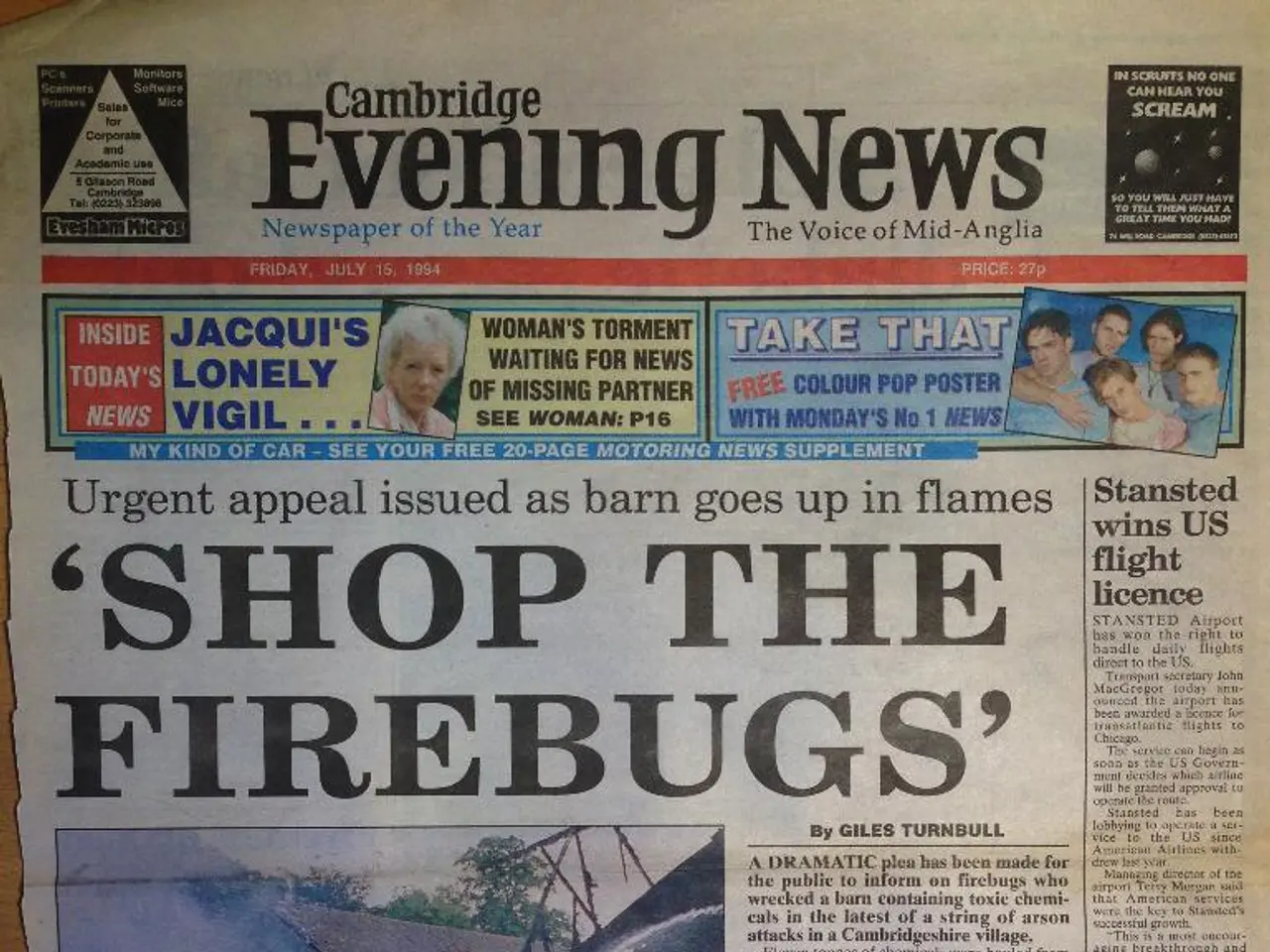Low forest fire danger in Brandenburg slightly increasing - Elevated, yet still moderate forest fire risk present in Brandenburg, predicted to slightly escalate.
Forest Fire Risk in Brandenburg: A Closer Look
Brandenburg, Germany, is bracing for an increase in forest fire risk in the coming days, with particular concern focused on the Märkisch-Oderland district.
The German Weather Service has predicted a low forest fire risk in Brandenburg on Sunday and Monday. However, the situation is expected to change from Tuesday onwards. On Wednesday, a moderate forest fire risk is forecast in the Märkisch-Oderland district, with some areas experiencing a high risk.
The elevated risk is attributed to a combination of factors. Climate change and drought are playing a significant role, with the increased occurrence of drought leading to drier forest conditions and making vegetation more flammable. Exceptional heatwaves and prolonged dry periods have stressed German forests, including those in Brandenburg, making them more susceptible to wildfires.
The forest composition in Brandenburg, dominated by flammable monocultures, especially of pine species, also contributes to the higher fire risk. The continuous fuel provided by these monocultures facilitates the rapid spread of wildfires.
Historical land use patterns, particularly the presence of military areas, are another contributing factor. In the Märkisch-Oderland district, areas with a history of military use, like the Gohrischheide, contain unexploded ordnance that restricts firefighting tactics and complicates suppression efforts, allowing fires to persist longer and spread more.
Forest health problems, such as bark beetle outbreaks, also amplify the fire risk. These outbreaks increase the amount of dead and dry wood in the forest, providing more fuel for wildfires.
Authorities have noted that firefighting in this region is particularly challenging due to the terrain and the presence of unexploded military ordnance. This requires adjustments to suppression strategies and contributes to prolonged fire duration in the district.
On Monday, a low forest fire risk is expected in some regions of Brandenburg. On the same day, the lowest level of forest fire risk was recorded throughout Brandenburg. On Tuesday, a moderate forest fire risk is forecast in the Märkisch-Oderland district.
It is crucial for residents and visitors to be aware of the increased fire risk and to take necessary precautions to prevent wildfires. This includes not leaving campfires unattended, ensuring cigarettes are fully extinguished, and avoiding activities that could spark a fire during periods of high fire risk.
Sources: [1] German Weather Service (DWD) [2] European Forest Institute (EFI) [3] Brandenburg State Office for Environment, Agriculture and Consumer Protection (LUBW) [4] Federal Ministry for the Environment, Nature Conservation and Nuclear Safety (BMU)
- The elevated forest fire risk in Brandenburg is influenced by climate change, drought, and environmental factors such as flammable monoculture forests, historical land use patterns, and forest health problems like bark beetle outbreaks, all of which contribute to creating more favorable conditions for wildfires.
- In light of the moderate forest fire risk forecast for the Märkisch-Oderland district on Wednesday, it's crucial for residents and visitors to observe environmental-science precautions, such as extinguishing cigarettes properly, preventing unattended campfires, and avoiding activities that could spark a fire, to help mitigate the impact of climate-change-induced wildfires.








